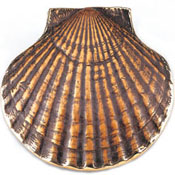
make sure to refresh this page every time you access it

============================================================================================
SYMBOLS:

THE HAMMER OF UNITY (ONENESS)

THE SHELL OF PILGRIMAGE* (NEW SELF)

MEDITATION BEADS (LIBERATION)
LEADING CLASS DISCUSSION AT LEAST ONCE IS REQUIRED. You can earn up to thirty points for doing so. However, if you are assigned to lead class discussion and do not meet the requirements for doing so you will receive negative thirty points. These negative points will remain unless you do lead a class discussion. You may not have any chances to do so, however. If you can not meet the requirements, your only alternative is to find a classmate who will do so by meeting the basic requirements.
Basic Requirements for Leading Class Discussion.
1. You must post a valid entry in the relevant Blog by 8 P.M. the night before class discussion. "No excuses, no exceptions, no rescues." This is a test of your priorities and capacity for time management. A valid entry is one that meets the basic requirements for quotations and images. Failure to meet this requirement also signals the instructor in time to prepare to lead discussion in your place.
2. The leader identifies and organizes key themes and dialectics in the posted blog entries and comments in an outline or chart or whatever to show that he has read all of the entries received by midnight or so.
3. The leader then prepares his/her plan for the discussion and uploads the outline of the entries and the discussion plan to the relevant Blog by 9:30 A. M. on the day of the class discussion.
4. The leader then guides the class in an organized discussion of the topics and readings assigned for that day. The leader focuses on how the blog entries and readings relate to each other and to the themes of the course throughout the semester . The discussion leader's goals are to (1) facilitate a productive and comprehensive discussion involving as many students as possible; (2) keep the discussion focused on assigned readings; (3) "Only Connect" the readings to each other and to our other themes for this semester.
When the leader calls on someone to speak, the leader may ask, (1) "what quote do you have for us to consider?" (2) Then the leader asks for the page and location on the page of the quote. (3) Then the leader asks for a summary of the context of the quote. (In both the initial blog entry and in the ensuing class discussion it is crucial to demonstrate close reading, especially getting the context of quotes correct: otherwise the quotes do not count and the speaker may make egregious errors.)
When vague abstractions are introduced, the leader is expected to ask for definitions and examples immediately. (Students who introduce vague abstractions should be prepared to supply these definitions and examples.) Why? "Without a firm hold on things, we shall waste ourselves in vague speculations" (John Henry Newman, author of The Idea of a University ).
5. The leader will try to include everyone in the class. After those with their hands up have all spoken once, instead of calling on them again, the leader will call upon one of those who have not raised their hands and ask that person to summarize the discussion so far. (They will lose points if they can not do so.) The leader can then call on more of those who have not participated or alternate between them and those who have already spoken once or ........
If the leader wants to retain the option of going outside for class, s/he needs to have a readable printout of the all the blog entries as well as outline and discussion plan to take outside (and/or tested wireless computer access in the place s/he wants to hold class).
EXPERIENTIAL LEARNING OPTION. After demonstrating careful reading of all the Blog entries by making an outline of them and uploading it, the leader can choose to replace some or all of the discussion time with one or more experiential learning exercises focused on the themes of that day’s assignment. Experiential learning is more likely to earn the leader the maximum number of points.
GRADES. The leader usually learns twenty points or so for following the instructions above. If the the leader uses PowerPoint or some other multimedia to guide the discussion the leader usually earns about twenty-five points. If the leader users experiential learning s/he usually earns thirty or more points. The teacher will act as grader for the rest or the students also, and, if need be, co-facilitator of the discussion process, awarding points to those who demonstrate detailed knowledge of the other students' contributions to the blog and/or make good connections backed up by citations from our assigned texts.
---------------------------------------------------------------------------
